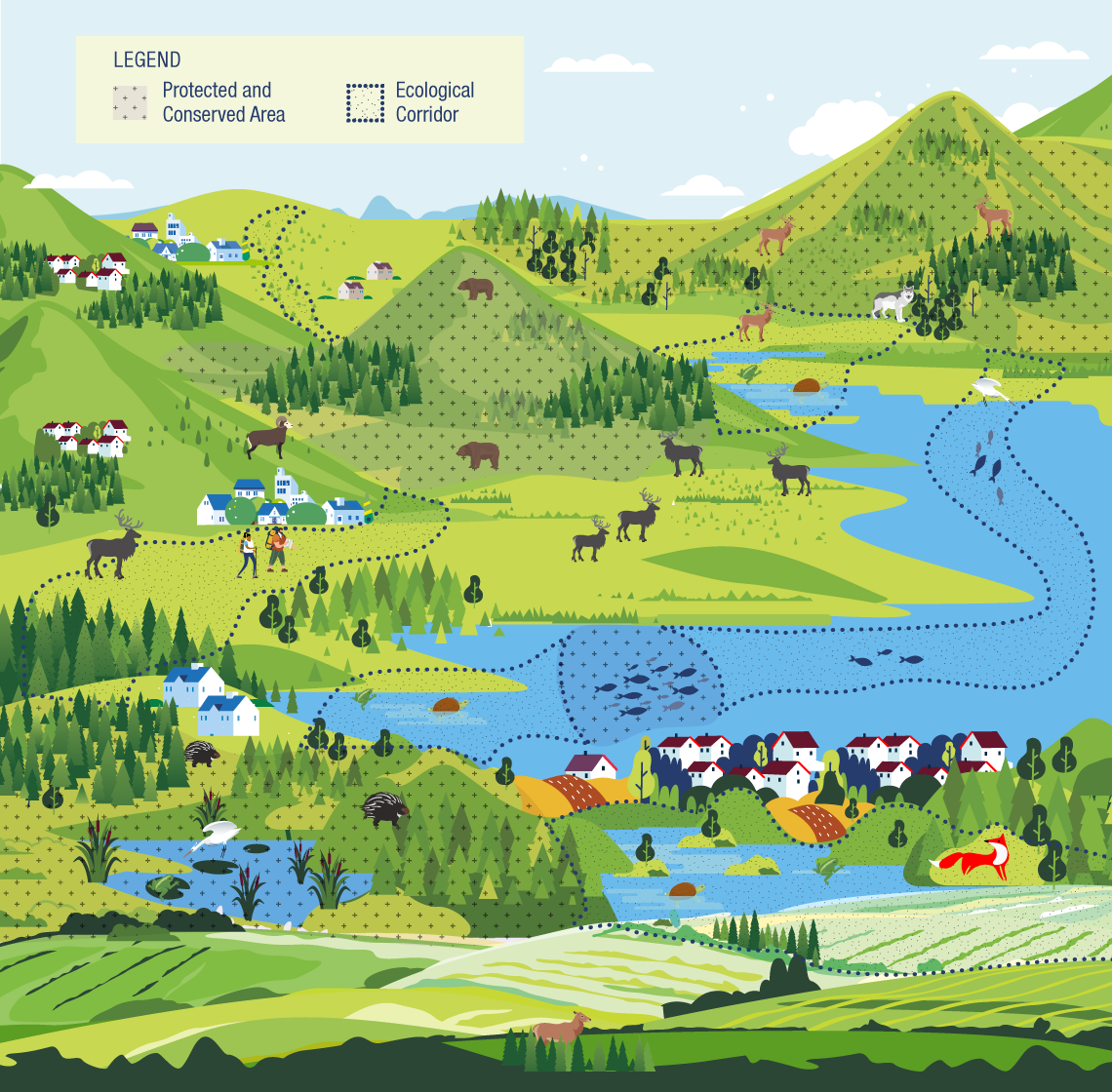
Ecological corridors
Conservation tools to complement protected and conserved areas
Ecological corridors help connect protected and conserved areas across large landscapes. They :
- help species adapt to climate change
- lessen the impact of human development on natural habitats
- connect various habitat types needed for species' different life stages, including migration
- support vital ecosystem services like provision of food and clean air, as well as nutrient, and water cycles
- promote human-wildlife coexistence and ways for people to connect with nature
- complement protected and conserved areas by conserving ecological connectivity
- are locally driven and managed
- are based on support and voluntary participation from landowners and land managers
- are compatible with other land uses such as agriculture, forestry, hunting, fishing, etc.
Ecological corridors are not:
- protected or conserved areas, like national parks
- managed, owned or administered by Parks Canada
- formally recognized or reported without the landowners’ or rightsholders’ free, prior and informed consent
- established under federal legislation or federally regulated areas

-
Ecological network for conservation - Text version
An illustration shows a landscape of mountains, scattered mixed-forest patches, and lakes under a light blue sky. The mountains are in the background, moving to rolling hills in the middle of the image. A large lake stretches across the landscape, with smaller lakes in the foreground. Small towns are dispersed throughout the landscape. A large town and farm fields are visible in the foreground, surrounded by smaller lakes. Patches of forests, mountains, and lakes are shown overlaid with a dotted pattern. These dotted patches of land and water represent protected and conserved areas. Other areas representing ecological corridors are shown outlined by a dotted line. These ecological corridors are connecting the protected and conserved areas.
The corridors stretch between and around the small towns, including some of the farm fields. They cross land and water areas. A school of fish is shown in the area where one protected area and ecological corridor meet in the lake. Many wildlife are also visible throughout the natural areas. Most of the wildlife are shown in the ecological corridors and protected and conserved areas. These include bears, caribou, mountain goats, wolves, herons, porcupines, turtles, deer, and a fox. Two hikers can also be seen using one of the ecological corridors.
An ecological network for conservation.
Together, ecological corridors and protected and conserved areas form ecological networks for conservation. Ecological networks are a web of core conservation areas that are connected by ecological corridors.
Download the full infographic (PDF, 982 Kb)
Read more about the National Program for Ecological Corridors.
For further information about ecological connectivity and corridors check out the video linked below. It provides an excellent overview of ecological connectivity and why it is important for protecting wildlife and wild places.
- Date modified :